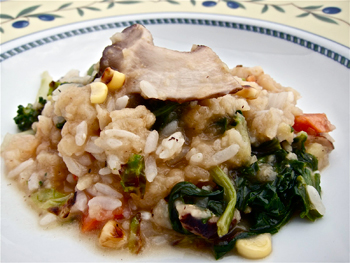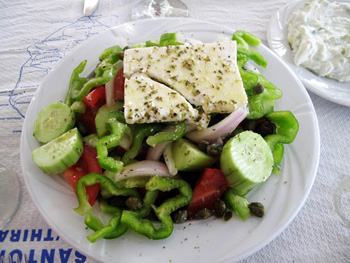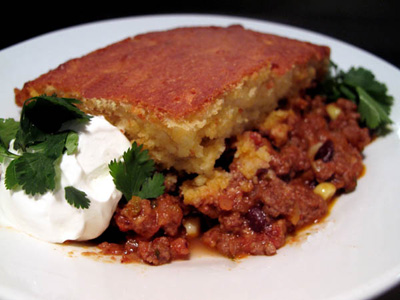 Congee is rice served "wet" in a broth with vegetables, tofu, meat, seafood, or poultry.
Congee is rice served "wet" in a broth with vegetables, tofu, meat, seafood, or poultry.
Congee is the Asian equivalent of Jewish chicken soup, perfect when the weather is cold and damp or you're fighting off a cold. Served in a variety of ways, depending on the country of origin or what's in season, the basic dish is made with cooked rice, a liquid, and flavorings. You'll find dozens of authentic, regional recipes in cookbooks and online, but in our kitchen "congee" is another way of saying repurposed deliciousness.
Whatever we don't eat at a Japanese, Chinese, Vietnamese, or Thai restaurant we bring home. Invariably, a container of rice is included along with the kung pao chicken, tempera shrimp and vegetables, stir fried beef with broccoli, or sweet and sour pork that we couldn't finish.
Reheating these dishes at home is one option, but transforming them into congee is better. For example, converting vegetable and shrimp tempura into an aromatic, deeply satisfying and delicious congee is one way this simple technique can turn left-overs into the best comfort food you've ever eaten.
Tempura Vegetable and Shrimp Congee
Serves 2
Time 30 minutes
Ingredients
2 tempura shrimp, tail removed
4-6 pieces tempura vegetables
1 cup cooked rice
1 garlic clove, skin removed, finely chopped
4 cups spinach leaves, washed to remove grit, stems and leaves finely chopped
4 shiitake mushrooms, washed, tips of the stems removed, thinly sliced
1/2 cup corn kernels, fresh or from a can
2 cups water or miso soup or a combination of both
1 tablespoon olive or sesame oil
Sea salt and pepper to taste
Method
Cut the shrimp and tempura vegetables into bite-sized pieces and set aside. Saute on a medium-low flame the garlic, shiitake mushrooms, and corn kernels until lightly browned.
Add the cut up spinach and water or a mix of miso soup and water. Raise the flame and simmer 10 minutes.
Add the cut up tempura vegetables and shrimp to the broth. Stir well and simmer 10 minutes.
Add the cooked rice, stir well and simmer a final 5 minutes.
David Latt is an Emmy-award winning television producer who turns to cooking to alleviate stress. He shares his experiences with food and his favorite recipes on his blog Men Who Like To Cook.
 If you are looking for a quick evening meal packed with flavor, you've found it.
If you are looking for a quick evening meal packed with flavor, you've found it.
 When I was growing up, my mom often made two different cucumber salads. For each of the salads, she sliced fresh cucumbers into very thin rounds. In one salad, the cucumbers bathed in a clear vinegar-water solution seasoned with sugar and lots of black pepper. I always liked that salad. My favorite, though, was the salad made of thinly sliced cucumbers swimming in a delicious sour cream sauce with sugar and vinegar stirred in along with thin, delicate threads of fresh dill weed.
When I was growing up, my mom often made two different cucumber salads. For each of the salads, she sliced fresh cucumbers into very thin rounds. In one salad, the cucumbers bathed in a clear vinegar-water solution seasoned with sugar and lots of black pepper. I always liked that salad. My favorite, though, was the salad made of thinly sliced cucumbers swimming in a delicious sour cream sauce with sugar and vinegar stirred in along with thin, delicate threads of fresh dill weed. Congee is rice served "wet" in a broth with vegetables, tofu, meat, seafood, or poultry.
Congee is rice served "wet" in a broth with vegetables, tofu, meat, seafood, or poultry. The most traditional Greek salad recipe, and the kind of Greek salad you will usually encounter in Greece, does not typically include lettuce, but is more a bowl of raw chunky vegetables with a little olive oil and lemon juice.
The most traditional Greek salad recipe, and the kind of Greek salad you will usually encounter in Greece, does not typically include lettuce, but is more a bowl of raw chunky vegetables with a little olive oil and lemon juice. This is one of my favorite winter casseroles based on a recipe from
This is one of my favorite winter casseroles based on a recipe from 